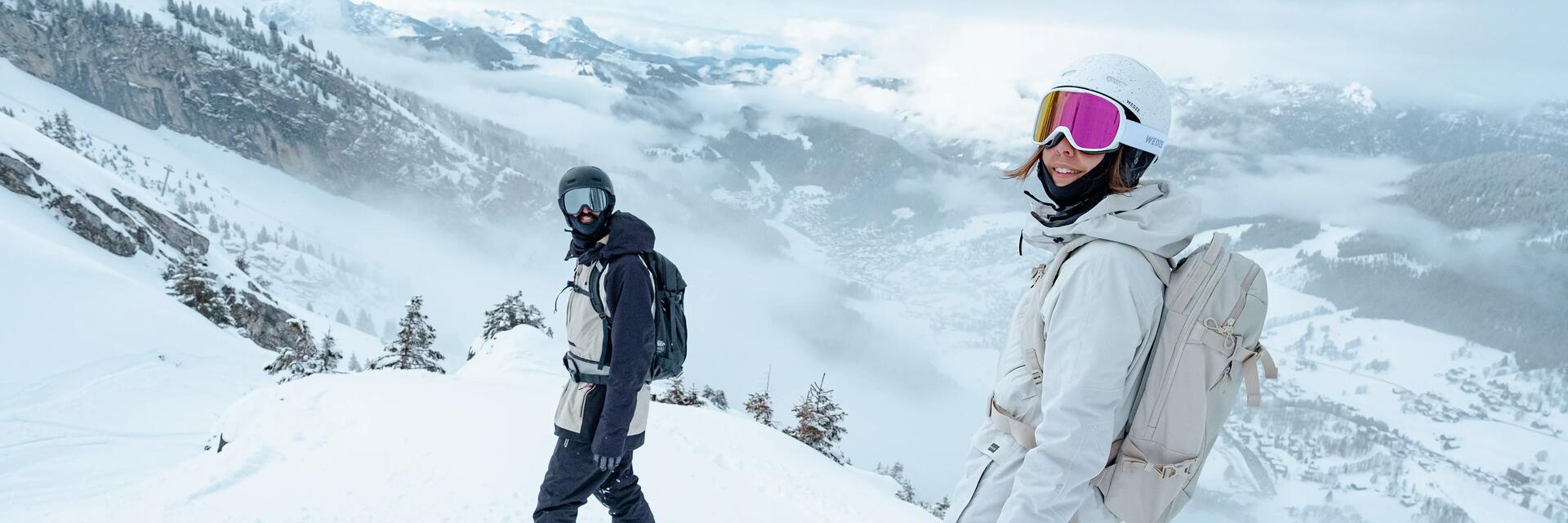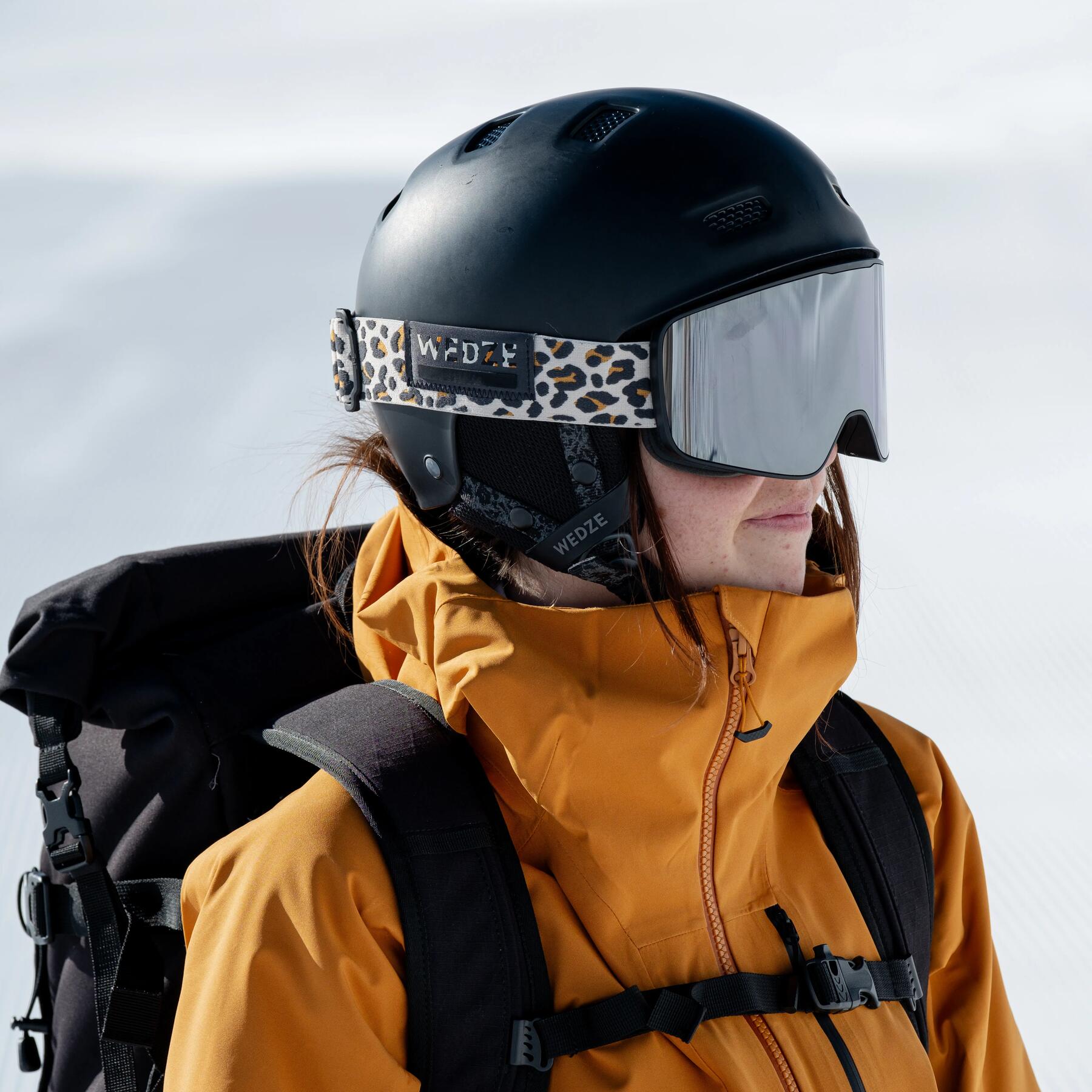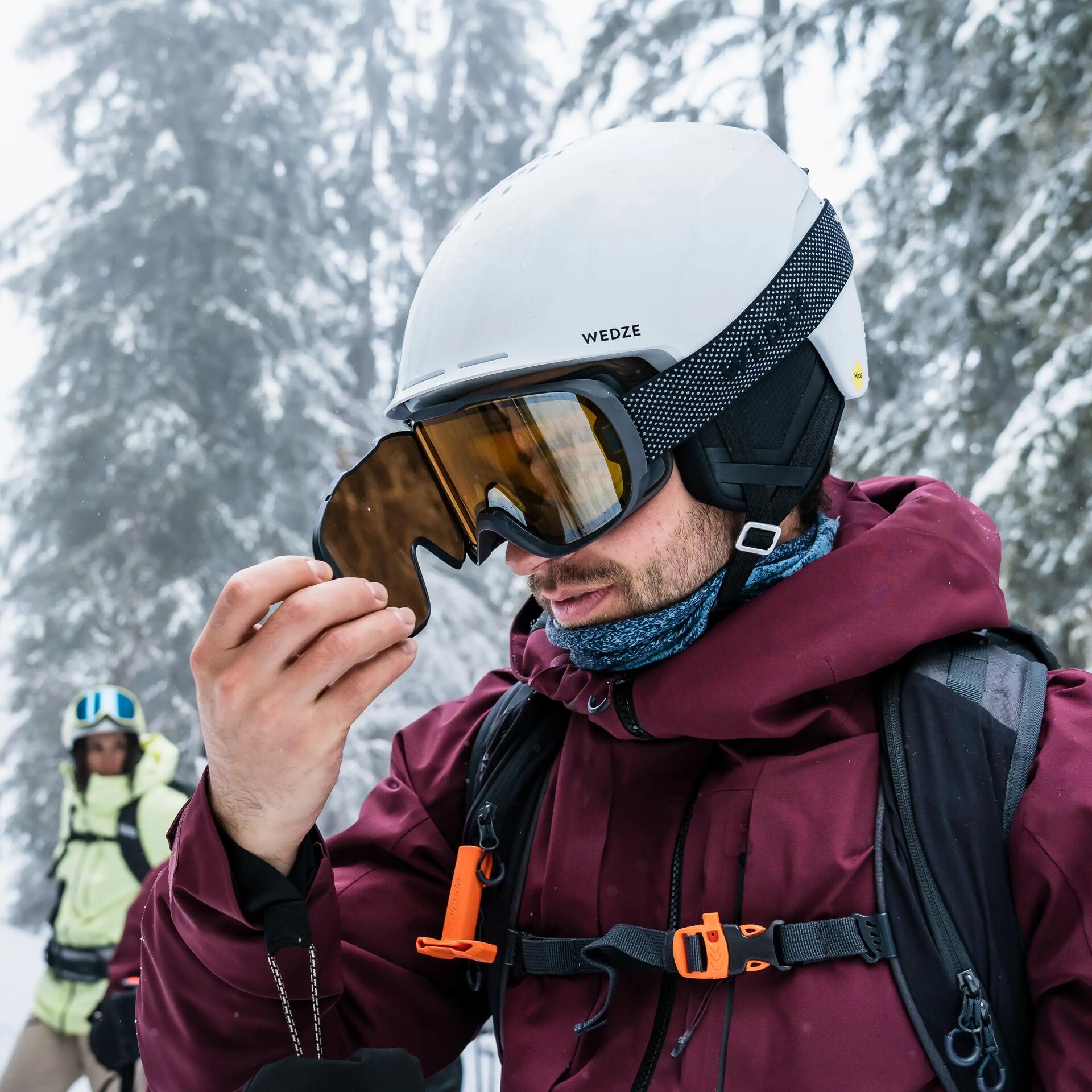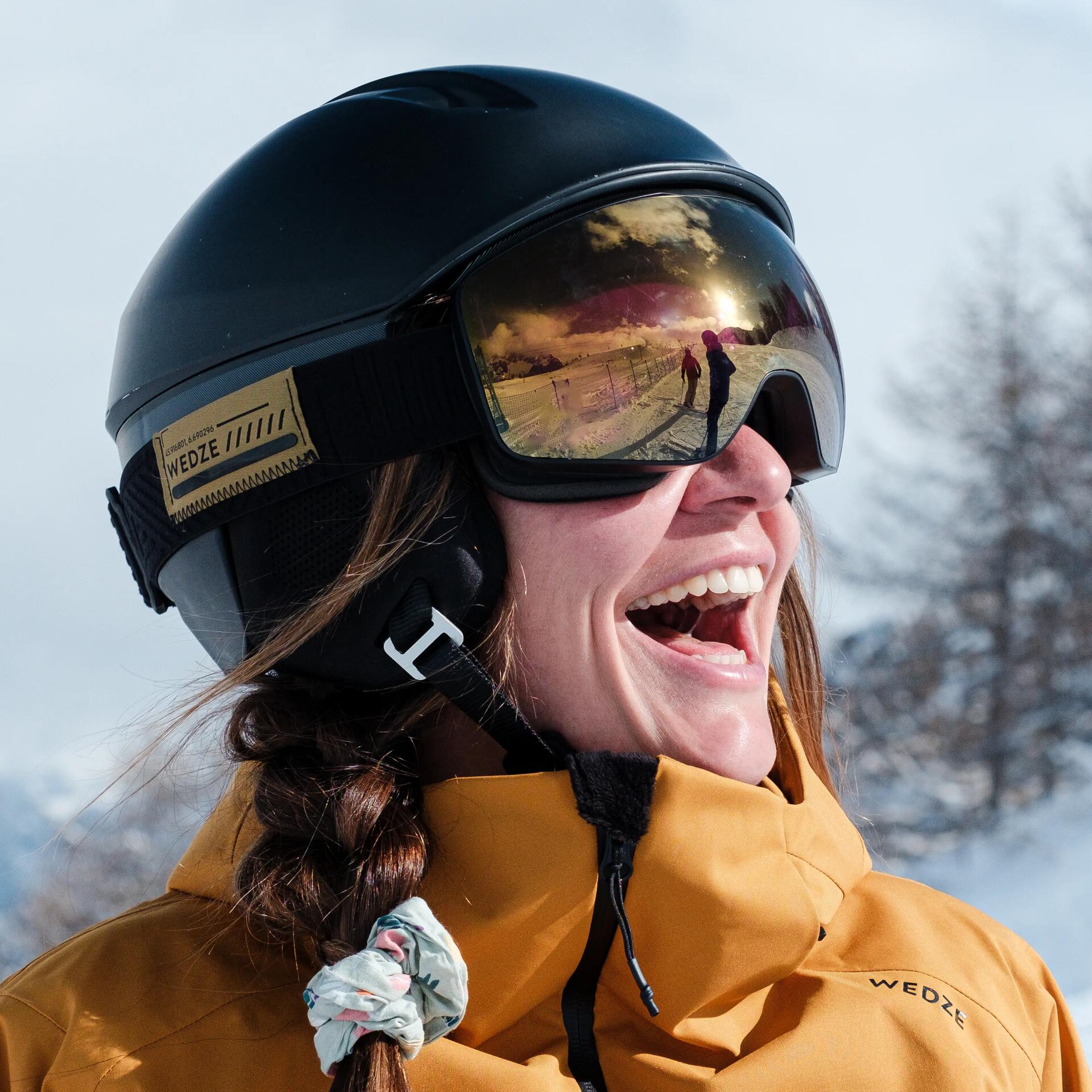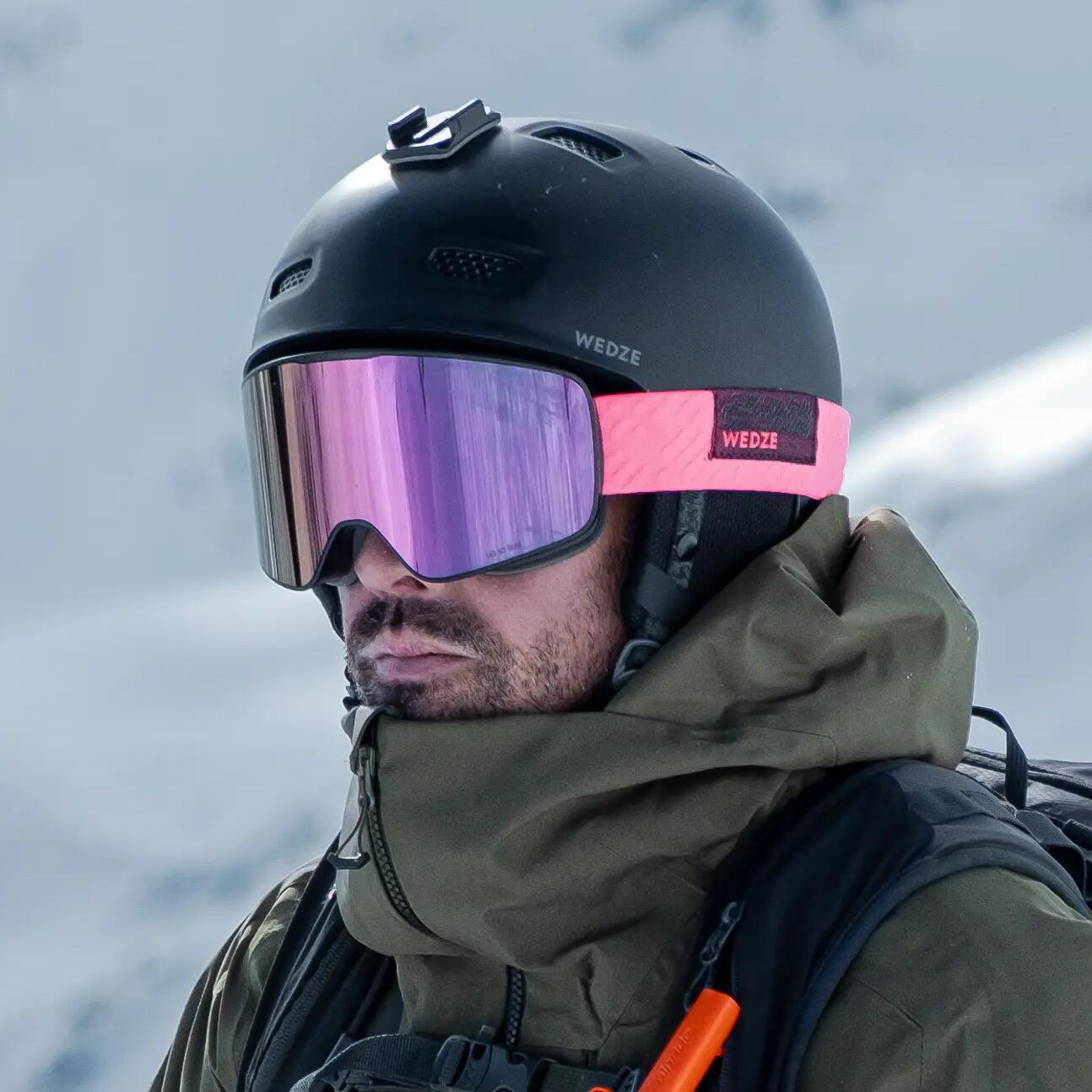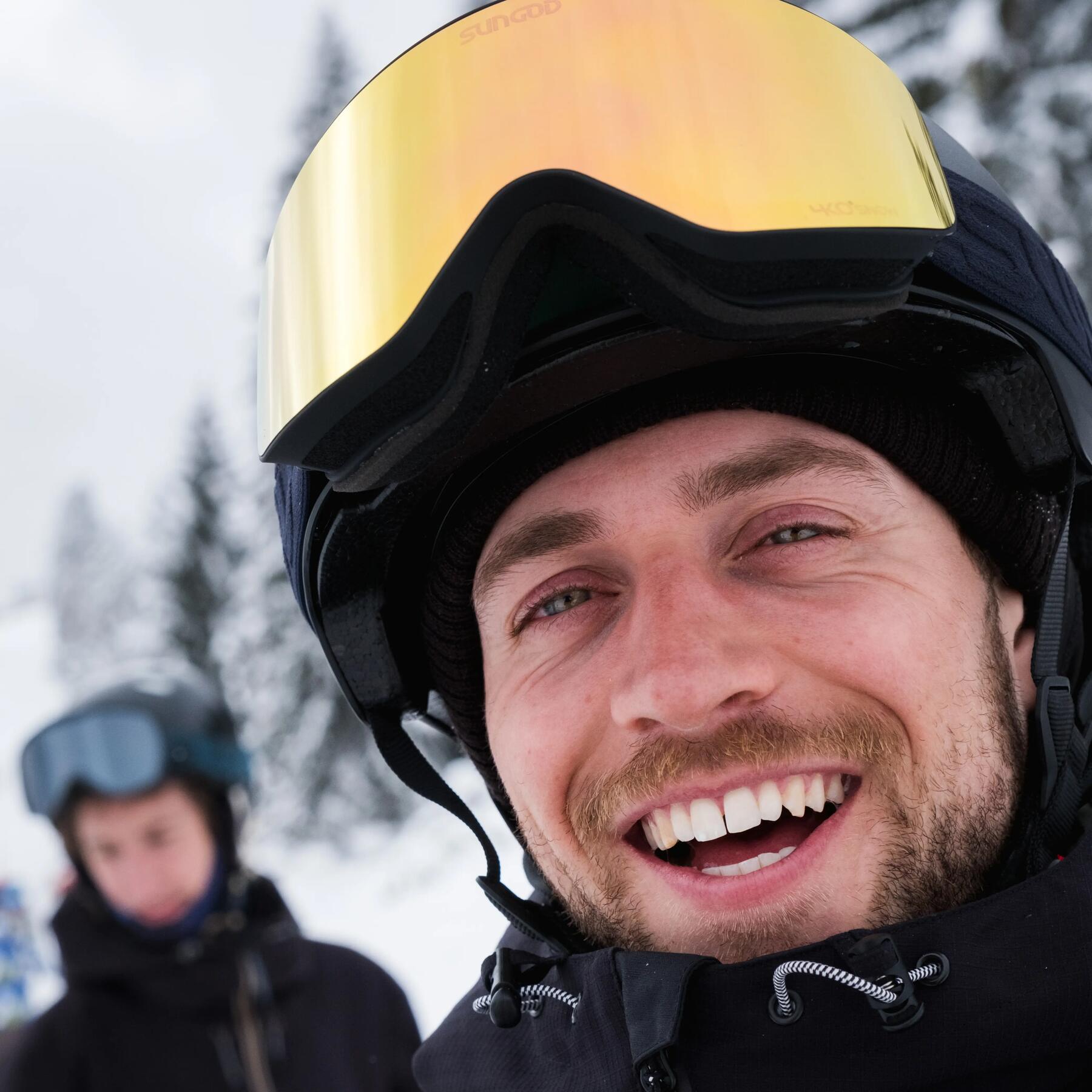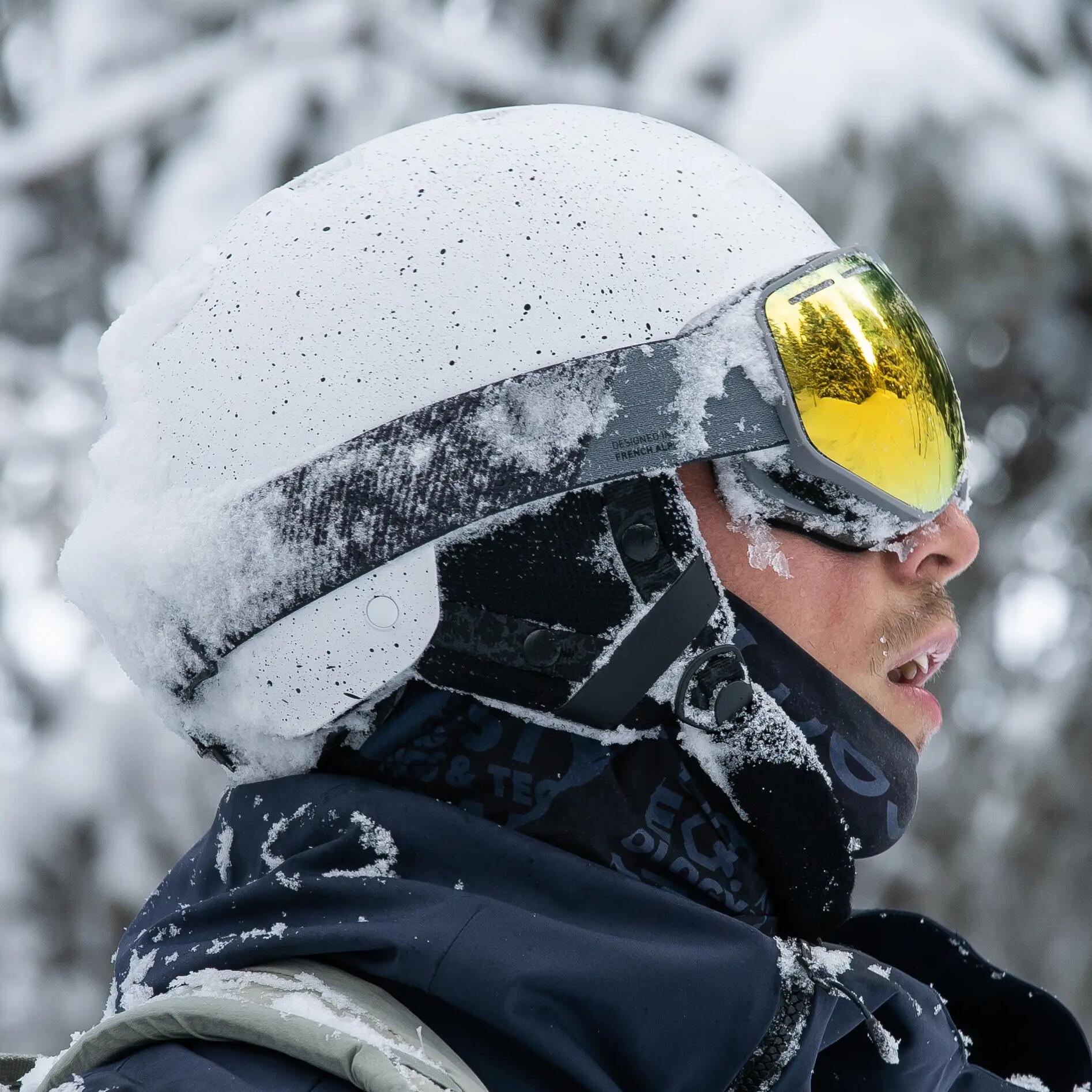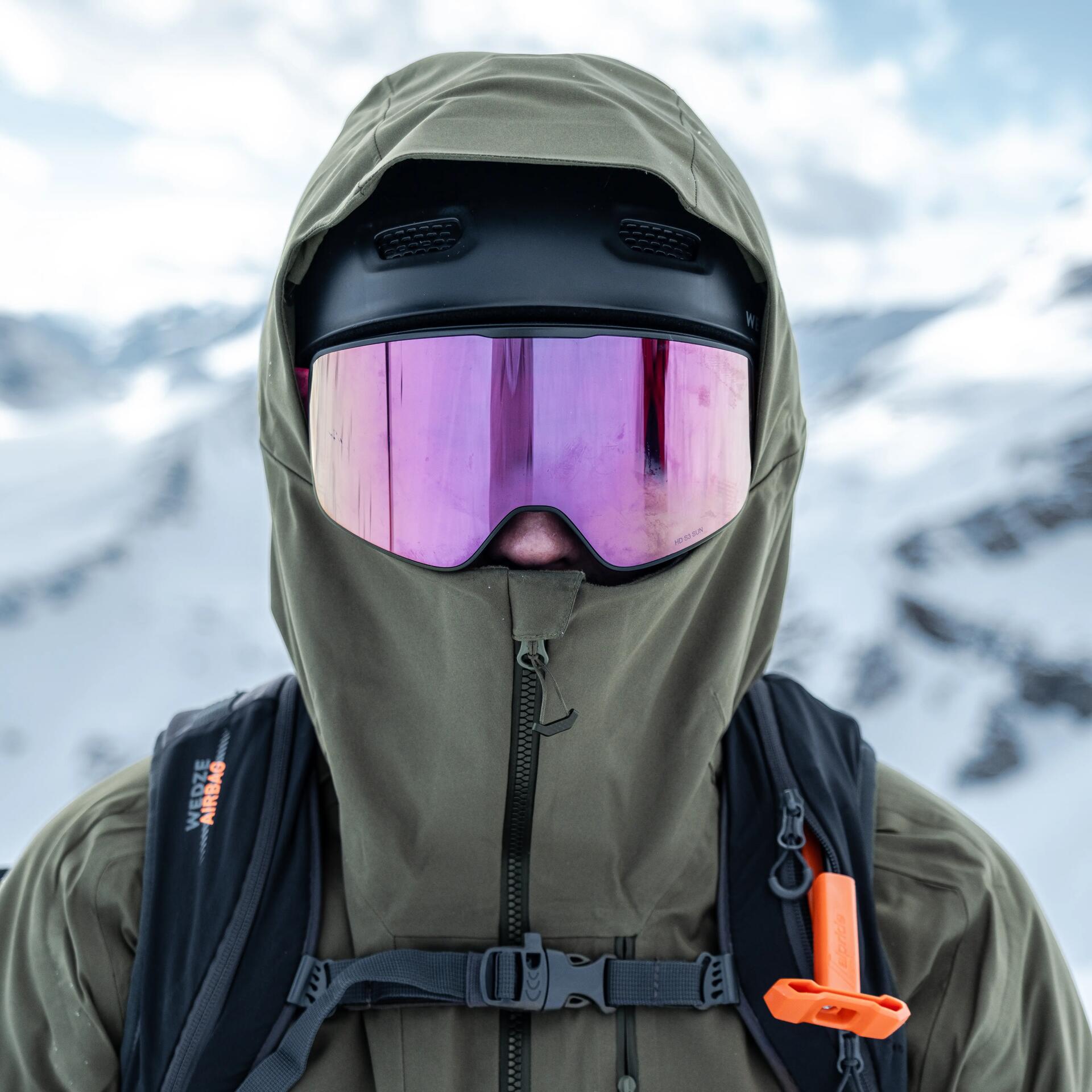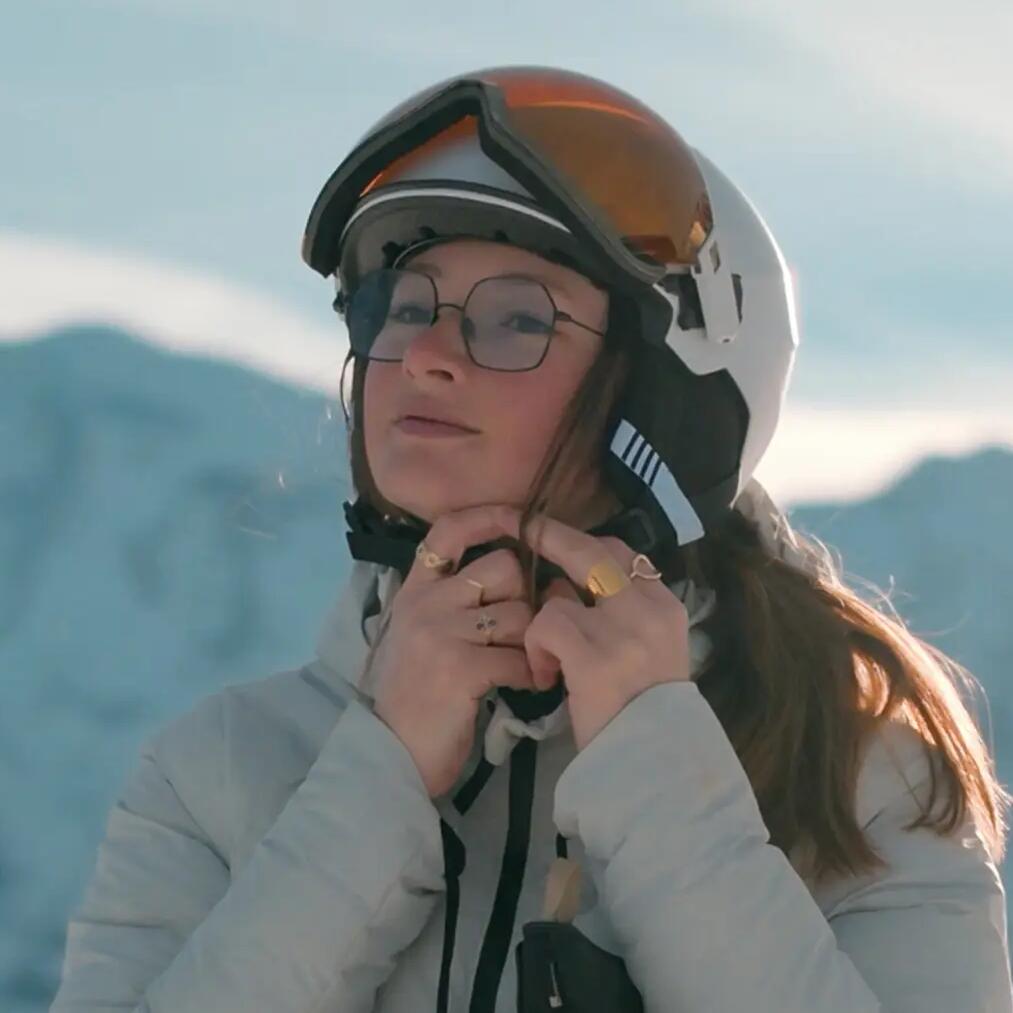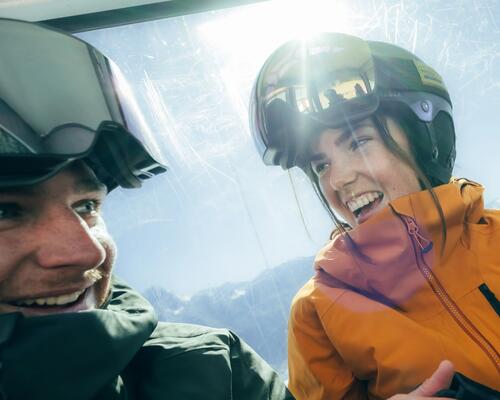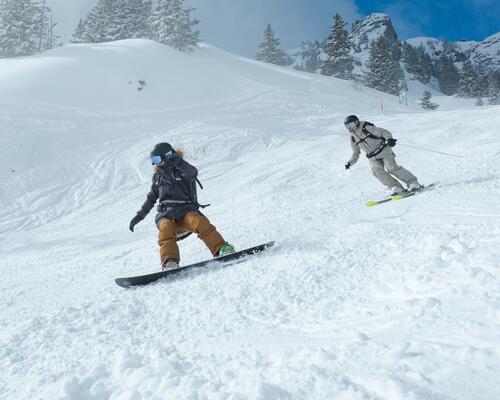Safety & ski goggles, what does that mean?
Ski goggles are a key safety item, just like body protection.
Whatever the season, the higher you go, the more UV there is (+10% every 1000 meters!). In winter, the reflection on the snow makes UV more aggressive on the eyes, even in overcast weather. For young teenagers/adults:
Also, your perception of the terrain depends on the conditions: glare in bright light, low visibility in fog... Having a suitable mask means you can have better vision and so plan further ahead.
Finally, ski goggles protect you from the outside elements. Airtight, they prevent air from getting in, and so avoid your eyes watering, which can be bad for them in cold weather (as well as being very unpleasant). Of course, they also prevent contact with foreign bodies (branches, small stones, etc.).
